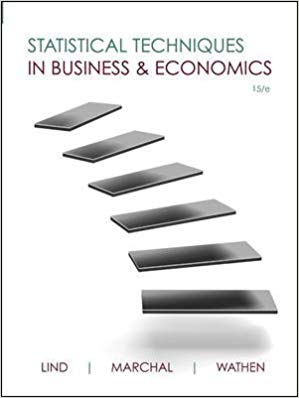Description
Statistical Techniques in Business And Economics 15th Edition By Lind – Test Bank
Chapter 04
Describing Data: Displaying and Exploring Data
True / False Questions
1. A dot plot is an easy way to represent the relationship between two variables.
True False
2. A dot plot is useful for quickly graphing frequencies in a small data set.
True False
3. A dot plot shows the relative symmetry of a distribution.
True False
4. A dot plot is useful for showing possible outliers.
True False
5. A dot plot is useful for showing the range of the data.
True False
6. A stem-and-leaf diagram shows the actual data values.
True False
7. In a stem-and-leaf display, the leaf represents a class of a frequency distribution.
True False
8. In a stem-and-leaf display, the leaf represents the members of a class in a frequency distribution.
True False
9. Quartiles divide a distribution into four equal parts.
True False
10. Quartiles divide a distribution into ten equal parts.
True False
11. Percentiles divide a distribution into one hundred equal parts.
True False
12. A student scored in the 85th percentile on a standardized test. This means that the student scored lower than 85% of all students who took the test.
True False
13. The 50th percentile of a distribution is the same as the distribution mean.
True False
14. A box plot graphically shows the 10th and 90th percentiles.
True False
15. The “box” in a box plot shows the interquartile range.
True False
16. A box plot shows the relative symmetry of a distribution.
True False
17. The coefficient of skewness is the standard deviation divided by the mean.
True False
18. Pearson’s coefficient of skewness is a measure of a distribution’s symmetry.
True False
19. If a distribution is negatively skewed, the distribution is not symmetrical and the long tail is to the left.
True False

Reviews
There are no reviews yet.